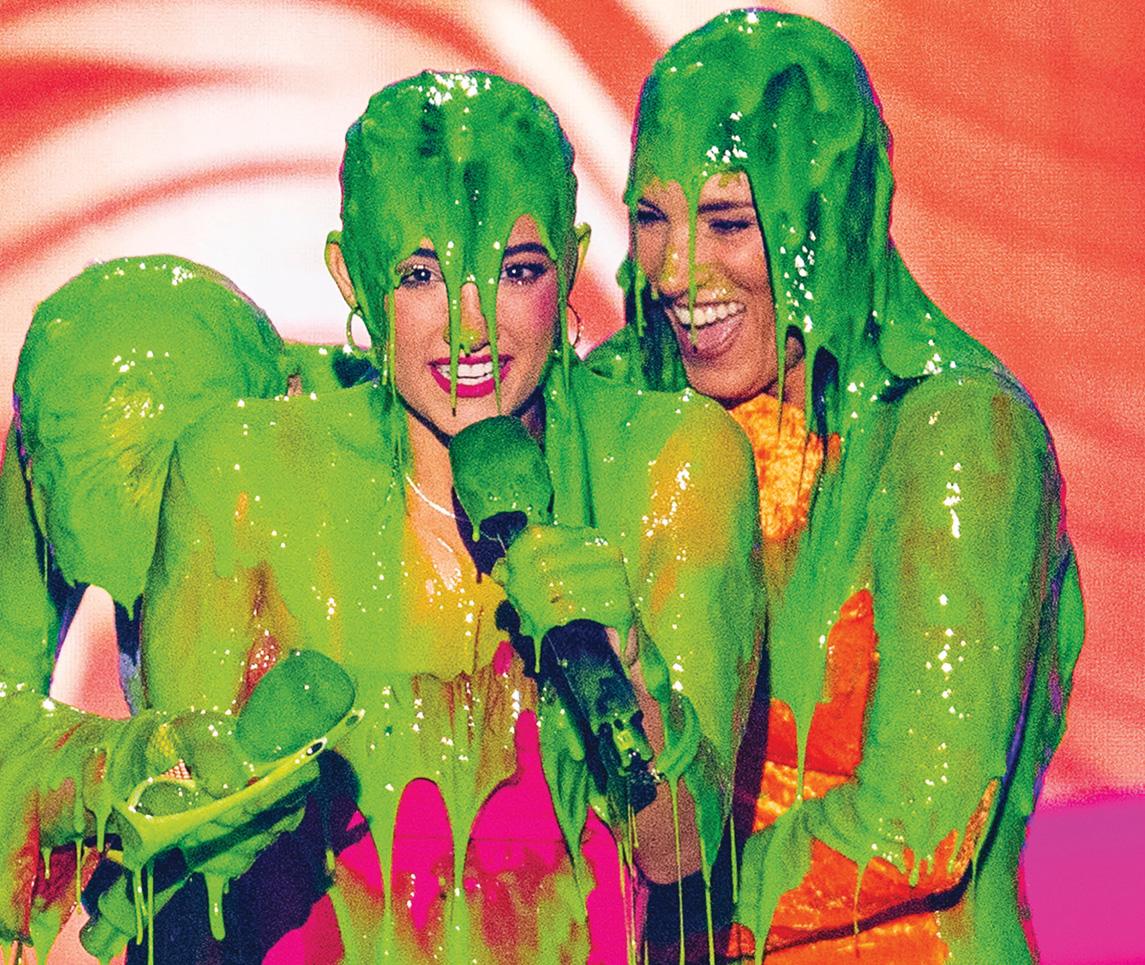Yes, gloop is gross, but slime has been sold as a toy for almost half a century and is more popular than ever. Some people love making slime and spend hours stretching and squishing it between their fingers. Even famous people seem happy to have buckets of yellow yuck and green gunge hurled in their faces or dumped all over them on TV. Neither solid nor liquid, but somewhere weirdly in-between, it’s no surprise that gunk makes some people gag. Yet many others would love to get seriously slimed. So, if it’s so disgusting, what is its appeal? Could it be that slime somehow... is our friend?
It’s snot what you think
None of us are strangers to slippery slime. Our bodies are full of it. A thick layer of mucus protects your stomach walls and helps food move through your guts. It’s surrounds your eyes and coats your mouth and throat. It shields your organs, stopping them from drying out. In the nose and lungs, snot traps and flushes out unwanted body invaders, such as infectious bacteria, dust and smoke.
If you’re wondering how it got there, many of your body’s tissues produce it. You’ll be most familiar with the stringy stuff from the snot you snort out of your nose. Now, imagine being made to swallow more than a litre of that yucky stuff. Well, sorry to inform you, but you already do just that every day, without even realising it.
Healthy human bodies produce about 1.5 litres of mucus per day. You only really notice it when you have an infection, and it gets thicker, becoming the gross gunk that lodges in your throat and makes you dread peeping in your tissue after a hearty nose blow.
[https://cdn.magzter.com/1642519507/1697199036/articles/bVkKJtaVK1697464115661/LhYUaVPo61697464227346.jpg]
Do you wish you didn’t have to sneeze and cough up that ghastly green goo when you get poorly? You shouldn’t. It’s how your lungs get rid of the infection. Its greenish colour means it also contains white blood cells that are hard at work fighting diseases for you.
So, that’s the nature of your personal gloop, but what about slimy nature?
[https://cdn.magzter.com/1642519507/1697199036/articles/bVkKJtaVK1697464115661/s-6jwdwJL1697464256985.jpg]
Wild slime
Life on Earth was a layer of sludge for a billion years before it evolved into the plants that transformed our planet. Slime still oozes its way into almost every part of nature today, with many animals depending on it.
The flat sole (or "foot") of slugs and snails produces a fluid that helps them glide over many surfaces. Yet some slugs use slime for more than just getting around. Australia's red triangle slugs make a sticky goo, which can superglue a frog to a tree for days. This not only defends the slugs against hungry frogs, but also makes the frogs easy prey for predators. So, what stops the slugs from getting stuck? Experts got stuck trying to work that one out.
Slime also helps opossums to stay alive. These long-snouted marsupials are famous for "playing dead" when threatened. That involves more than just lying flat on the forest floor with their tongue lolling out. They also squeeze a green gloop out of their bottom that smells of decaying animal flesh and makes predators even less keen to gobble them up. It sounds like a great survival tactic, but it’s not something they can control. It’s simply what their body does when terror overcomes them.
Speaking of predators, slime can help animals to go on the attack, as well as defend themselves. For example, chameleon tongues contain mucus that is almost 400 times stickier than human saliva (spit). This helps them quickly snatch their prey.
Putrid plants
Even some plants make use of slime. In Mexico, a rare type of giant corn, called Sierra Mixe corn, doesn’t need manure or other fertilisers to help it grow. Its above-ground, finger-like roots drip with thick, clear, slimy mucus packed with bacteria. These tiny lifeforms allow the corn to suck the essential nutrient nitrogen from the air to fertilise itself.
Fungi are neither plants nor animals, they belong to their own kingdom of living things, but some are also slimers. Stinkhorn mushrooms, also known as devil's fingers, ooze an especially foul-smelling slop. This time, the revolting stink - again resembling decaying flesh - isn't to drive other animals away. It's to attract flies and other insects. They gobble the goo, which is packed with spores - the fungi equivalent of seeds. When they leave, the minibe...


